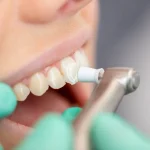Back pain is one of those things that creeps up on you—slowly at first, then all at once. Whether it’s a dull ache in your lower back or a sharp pain shooting down your leg, it’s not something anyone wants to live with. And if you’ve been told you might need surgery, the thought alone can be overwhelming. That’s where spinal decompression therapy comes into the picture.
Spinal decompression is a non-surgical treatment that gently stretches your spine using a motorized table or device. The goal is to relieve pressure on spinal discs and nerves, helping your body heal itself. While it’s not a magic fix for everything, it can be incredibly effective for several common conditions. Let’s take a look at the most frequent ones.
Herniated Discs
If you’ve ever felt a sudden, sharp pain in your back or leg after lifting something heavy or moving the wrong way, a herniated disc might be to blame. This happens when one of the soft, cushion-like discs between your spinal bones bulges or ruptures, putting pressure on nearby nerves.
Spinal decompression can help reduce that pressure. By gently stretching the spine, it creates more space for the disc to retract, which can ease pain and inflammation. Over time, this process can promote healing and get you back to normal activities without going under the knife.
Degenerative Disc Disease
Don’t let the name scare you—degenerative disc disease sounds more serious than it often is. It’s a natural part of aging, where the discs in your spine lose water and become less flexible. The result? Stiffness, discomfort, and sometimes chronic back or neck pain.
Spinal decompression offers a way to bring fresh nutrients and oxygen into these discs by increasing circulation. Think of it as giving your spine a little breathing room. This can help reduce pain and improve mobility, especially when combined with regular movement and healthy habits.
Sciatica
If you’ve ever had a burning or tingling feeling that runs from your lower back down one leg, you’ve likely met sciatica. This condition is caused by irritation or compression of the sciatic nerve—the largest nerve in your body. It’s not just painful; it can affect your sleep, posture, and ability to walk comfortably.
What spinal decompression does in this case is relieve the nerve pressure by gently spacing out the vertebrae, which can reduce the pain signals being sent down your leg. Some people feel a noticeable difference after just a few sessions, while others may need a bit longer to feel the full benefits.
Spinal Stenosis
Spinal stenosis is a narrowing of the spinal canal—the space that houses your spinal cord and nerves. This can cause a range of symptoms from numbness to muscle weakness, especially when you’re walking or standing. It’s more common in older adults but can affect anyone dealing with long-term spinal stress.
Decompression therapy helps by gently opening up the space around the spinal cord, which can reduce nerve pinching. It’s not a cure, but many people find it provides real relief, particularly when paired with physical therapy or lifestyle changes that reduce spinal strain.
Facet Joint Syndrome
Facet joints are small joints along the back of your spine that allow you to twist and bend. Like any joint, they can become inflamed or arthritic over time, especially if you’ve had a back injury or poor posture for years. This condition can lead to localized pain, stiffness, or even muscle spasms.
Spinal decompression can help by reducing the compression around these joints and relieving surrounding muscle tension. While not as widely known as other spine issues, facet joint syndrome is a growing reason why people seek out non-invasive therapies—and many report positive results with decompression.
Conclusion: It’s Not Just About Pain Relief
At the end of the day, spinal decompression therapy isn’t just about easing pain—it’s about giving people their lives back. Whether you’re dealing with a herniated disc or the everyday wear and tear of aging, this treatment offers a safe, drug-free alternative to more invasive procedures.
Of course, it’s important to speak with a healthcare provider to see if this therapy is right for you. But for many, it’s a game changer—one that opens the door to better movement, less pain, and more peace of mind.
If you’re curious about how spinal decompression might help your specific condition, you can learn more through clinics like the Intelligent Health Group. They offer personalized approaches and experienced practitioners who can guide you through the process.







